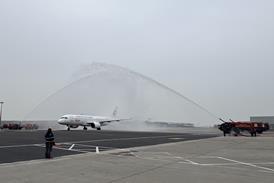A group of Europe's Nordic and Baltic countries is recommending adoption of a common regional transition altitude of either 10,000ft (3,050m) or 18,000ft instead of the disparate and much lower transition altitudes now in use.
The civil aviation authorities of Estonia, Finland, Norway and Sweden have worked with Eurocontrol to examine the feasibility of adopting a common transition altitude, and perhaps an extension eventually across all of Europe. Eurocontrol itself has conducted a study looking at the issues that such a move would involve.
The main arguments for changing the system of national or regional transition altitudes include the benefits of commonality, and the elimination of the need for pilots to adjust their altimeter pressure settings at low levels during the climb and descent where their workload is high and collision with terrain is a greater risk.
Having a transition altitude that affects most standard instrument departures and arrivals is also undesirable, the study notes. The report says International Civil Aviation Organisation guidance that recommends transition altitude should be set as low as possible above 3,000ft is based on the fact that, when it was made, aircraft performance was much more modest.
The USA and Canada have had a common transition altitude of 18,000ft for more than 40 years. The International Federation of Air Line Pilots' Associations backs a transition altitude of at least 10,000ft in Europe, which is also the altitude recommended by the Nordic feasiblity study, with 18,000ft as the alternative if 10,000ft is not judged acceptable.
Source: Flight International























